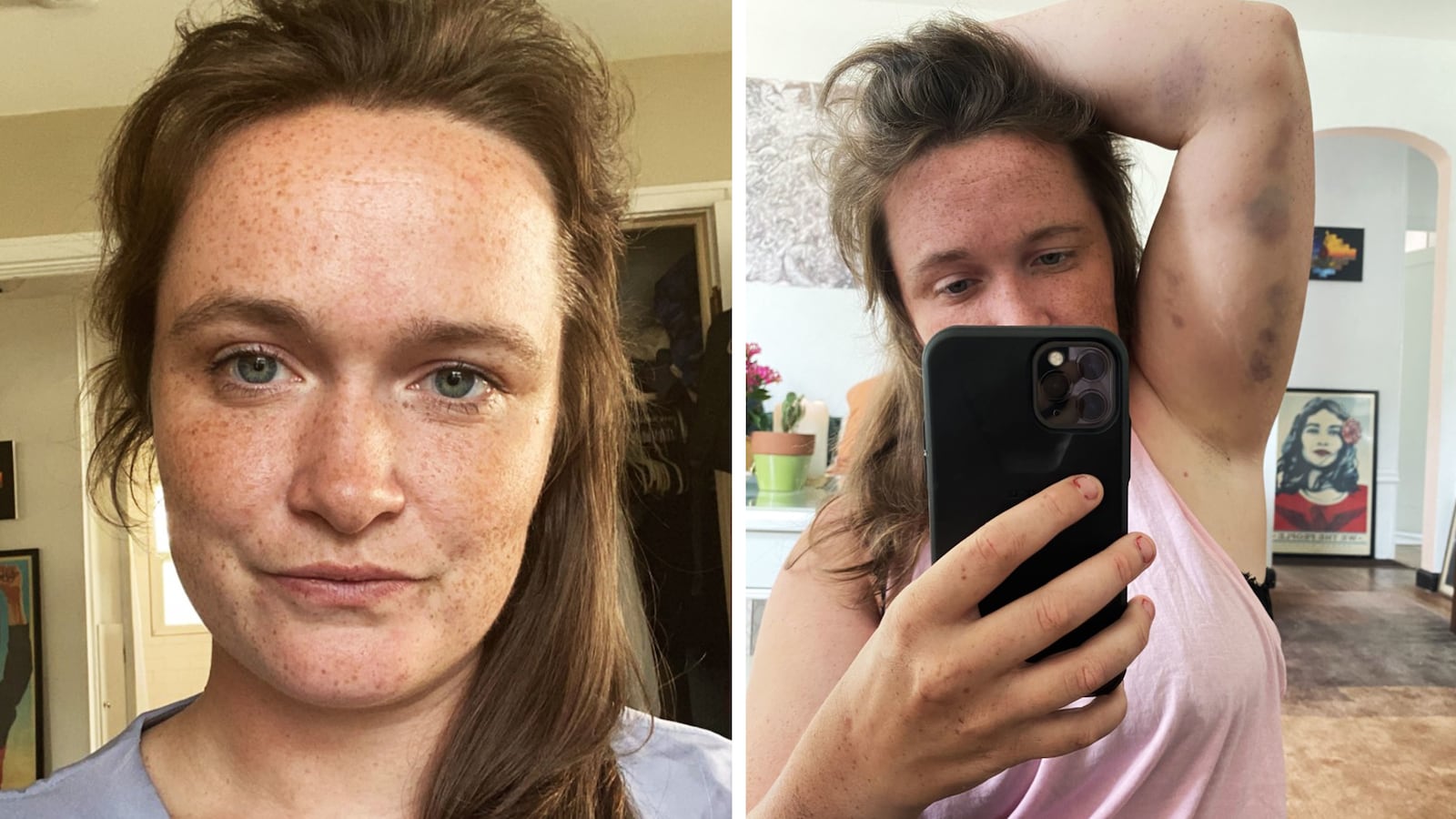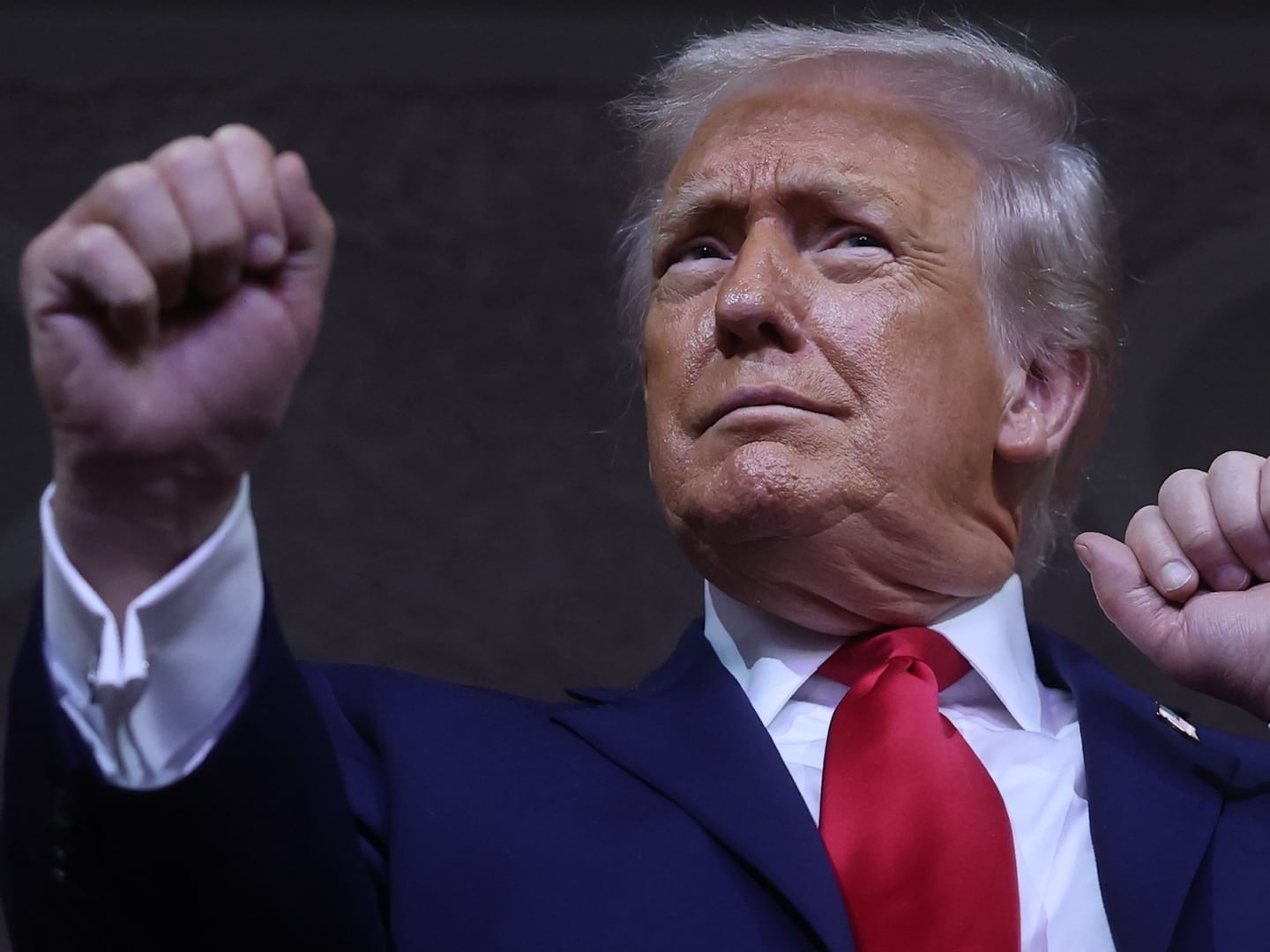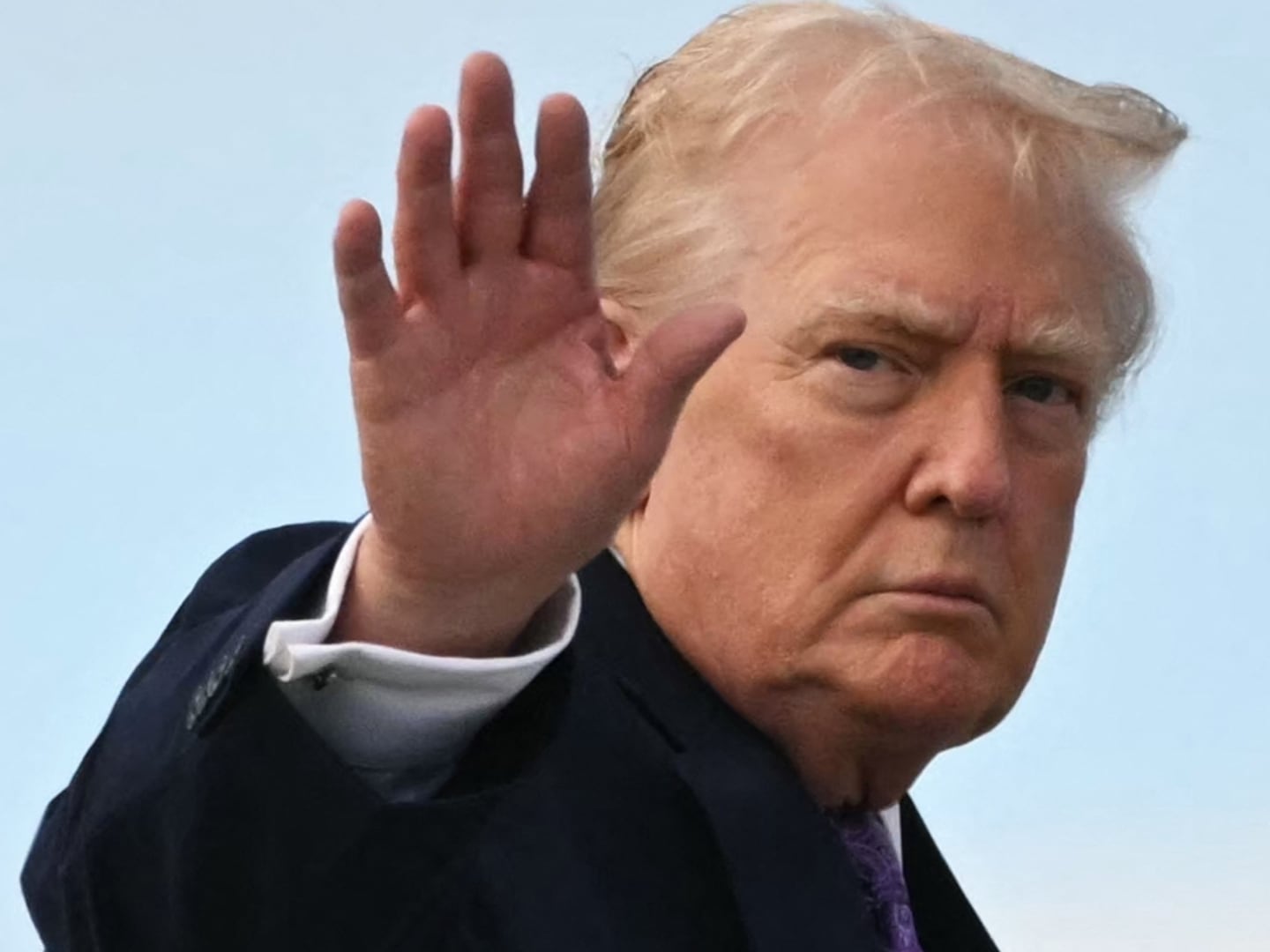Madalena McNeil is accused of buying red paint before a protest. Under aggressive new criminal charges, it could mean she spends the rest of her life in prison.
McNeil, 28, was among four people charged Tuesday for their alleged actions at a July Salt Lake City, Utah, protest over a district attorney’s decision that the fatal police shooting of a young man was justified. Protesters allegedly splashed red paint on the DA’s office, broke windows, and hung signs calling for justice for the slain man.
But instead of merely charging the protesters with vandalism or even rioting, that same DA used a charging enhancement to claim they operated as a gang. Under the new charges, the demonstrators face up to life in prison. It’s the latest in a pattern of harsh measures that ratchet up potential penalties by treating protesters like a criminal conspiracy.
“I'm not scared because I think that I did anything wrong, because I know that I didn't,” McNeil told The Daily Beast. “But it would be very foolish of me to look at the potential for life in prison and not be scared. When I heard about that [the charges] I realized that in the eyes of the state, I had become an enemy for exercising what is supposed to be a protected right.”
McNeil and a crowd that she estimated to contain 40 to 50 people gathered outside the DA’s office on July 9 to protest the lack of charges against a pair of officers who shot and killed 22-year-old Bernardo Palacios-Carbajal. Palacios-Carbajal was accused of making threats with a gun in May. He fled when officers arrived on the scene, and officers gave chase. He stumbled to the ground three times, the third time appearing to point his gun at officers, who shot him 34 times.
DA Sim Gill found that the officers were justified in the shooting, but the case has ignited local controversy, with Palacios-Carbajal’s family announcing plans to sue the city.
McNeil and fellow protesters were met with police in riot gear when they arrived at the DA’s office, she said. Footage she filmed from the event shows the police line charging protesters with their riot shields. McNeil, who shared pictures she said were bruises from the incident, accused Salt Lake City Police of brutality in the incident. Salt Lake City Police declined to comment.
A criminal complaint accuses McNeil of positioning herself to shove one of the shield-toting officers, and of buying the red paint that protesters allegedly splashed outside the DA’s office. She and six other protesters face criminal mischief and rioting charges, which usually cap at a second-degree felony, the Salt Lake Tribune reported. (McNeil declined to comment on the details of the case.)
<p><em><strong>Do you know something we should about protesters and how they are being treated by cops and prosecutors? Email Kelly.Weill@TheDailyBeast.com or securely at kellyweill@protonmail.com from a non-work device.</em></strong></p>
But Gill, the DA who was the focus of protesters’ ire in the first place, enhanced the charges using a provision intended for gangs. Under the new enhancements, which apply to “offenses committed in concert with two or more persons or in relation to a criminal street gang," the protesters can face up to life in prison, if convicted.
Utah legal experts said it’s an uncommon—perhaps even unprecedented—move in the state.
“From what I’ve seen, as far as charges coming down the line during protests over the last couple of years, this is something that’s pretty unique and unusual for Utah,” Jason Groth, an attorney with the American Civil Liberties Union of Utah, told The Daily Beast.
Groth said Gill was not using the gang enhancement as originally intended when the state passed it in 1990.
“The stated purpose of that enhancement was to get the heart and core of gangs off the streets, so social workers can work with the rest of the involved youth,” he said. "And so no matter what you think about that original purpose, it is far afield from the alleged facts in this case.”
In an interview, Gill said he disagreed and that he viewed the charging measure as a “group” enhancement not specific to gangs, and that it could be used in any situation in which two or more people were acting in concert.
“Unfortunately that’s how the state legislature named it, as a ‘gang’ enhancement,” he told The Daily Beast. “I call it a ‘group’ enhancement because that’s much more indicative that, factually, if you act in concert of two or more people, that is a group-enhanceable offense.”
Asked whether the two officers who shot and killed Palacios-Carbajal would have been eligible for a gang enhancement, had he pressed charges, Gill answered “for the sake of argument, is there a hypothetical if there are police officers acting in concert in the abuse of a person and the elements are there, would I charge them with a group enhancement? Yes, absolutely, if it’s applicable.”
Groth and McNeil also questioned the potential conflict of interest of Gill issuing sentencing enhancements against protesters who were demonstrating against him.
Gill told The Daily Beast that the apparent double-dipping was due to staffing shortages, but that other prosecutors would handle the case going forward. Even so, his fingerprints have already altered the case, argued Groth.
“I think what’s problematic, especially when the case is being handed off to another prosecutor's office, is that before that even gets to that prosecutor's desk, [the sentencing enhancements] are already framing the case,” Groth said. “And so that discretion to charge differently, or to not use an enhancement out the gate has been taken away.”
Gill said the independent prosecutors could, in fact, remove the enhancement.
The case is one of several recent incidents in which law enforcement has taken maximum action against protesters.
In 2017, prosecutors cracked down on anti-Trump activists who demonstrated and allegedly caused property damage during the president’s inauguration. Although individual allegations against the more-than 120 defendants were often flimsy, the state accused the group of a broad “conspiracy to riot,” charging that, based on activities like dressing in black and marching together, that they were collectively responsible for property damage. The charges carried a maximum 60 years in prison. (Except in a few cases in which defendants took early plea deals, defendants were either found not guilty or had their charges dismissed after it was revealed the prosecution’s case was built largely on doctored footage from the right-wing video group Project Veritas.)
More recently, conservative legislators have proposed labeling rioting (already a tenuous label, one critics say can be misapplied to protected speech and assembly) as terrorism. After racial justice protests broke out nationally this spring, a Michigan lawmaker introduced a bill that would classify rioters as domestic terrorists, calling the existing 10-year riot sentence “a slap on the wrist.”
During protests in Portland, Oregon, in recent weeks, federal officials sought to characterize vandalism incidents as extremist violence, with acting Homeland Security Secretary Chad Wolf issuing a long list of “anarchist extremist” incidents, most of which amounted to graffiti. A recent Homeland Security report, leaked to The Nation, revealed the department was considering tying the U.S. anti-fascist movement (which is not an organized group) to the Kurdish YPG fighting force. That move theoretically could enable feds to classify U.S. protesters as foreign-linked and enable otherwise-illegal surveillance against them.
The result is a deterrent on potential protests.
“Something to keep in mind is that when the district attorney associates protesters with gang members and uses that as an excuse to achieve the harshest-possible sentence (in this case, the harshest-possible sentence is a life sentence),” Groth said, “it's a disturbing use of prosecutorial discretion and truly has a chilling effect on free speech and protest activities.”
In Salt Lake City, Gill’s enhancements have already drawn outcry from elected officials, including the city’s mayor, who called them an overreach.
“I feel the potential punishment facing some protestors is excessive,” Mayor Erin Mendenhall tweeted Wednesday. "While I believe there should be consequences for breaking the law, the potential to spend life in prison for buying paint is too severe.”
Even Gill told the AP, “I don’t think anyone is going to be going to prison on this.”
If that’s the case, McNeil contends, why add the enhancements at all?
McNeil, who is white, also said she and fellow protesters further objected to gang enhancements due to their more common use against men of color. The prospect of life in prison is enough to make some defendants consider plea deals, even if not guilty, she said, and accepting a reduced sentence can still mean prison time, loss of jobs and housing, and financial blows. She and fellow defendants posted $50,000 bail to get out of jail (as much as the damage allegedly caused to the DA’s office), and McNeil was asked to resign from her job after her arrest, she claimed.
“There’s all of these biases and these connotations about being a thug and being a gang and getting together to commit crimes. To me, the message is, ‘Don’t think you can be near each other. If you are near someone who does something at a protest, then you could be in trouble, too,’” McNeil said.







